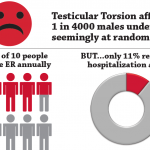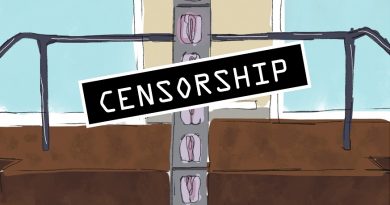Going to the ER to Save a Testicle
Two weeks ago at approximately 8:30 a.m., I was about ready to force myself out of bed when my husband began complaining about a pain in his groin (his right testicle hurt). Not long after, the pain grew sharper and seemed to radiate to the area of his abdomen and leg which in turn caused him to panic. Having a midterm in about four hours, I was somewhat detached and offered to take him to urgent care, A: because I wasn’t sure what our insurance covered and B: because I thought he was exaggerating. Not feeling entirely supported and becoming increasingly nervous about the steeping pain in his testicle, my husband (rightfully so) became a bit irate.
So I did the next best thing: I called my mom. I always call my mom whenever I’m in a dilemma, plus, she works in the medical field. She told me that I was being incredibly selfish for putting off taking him to the ER (which I totally was, but in my defense this was my first experience having this sort of an emergency).
As this was happening, one of my first thoughts was: How can we afford this situation? I mean, we have Medicaid (THANKS OBAMA) but that always entails a bit of uncharted territory when it comes to visiting unfamiliar facilities. But aside from that, I was afraid they would minimize his condition and tell us to go to urgent care. The only problematic factor was that I wasn’t the one experiencing the pain — it was my spouse. Therefore, he was the only individual that could decide whether or not his condition was significant enough to pursue immediate care.
Within thirty minutes, we were admitted to a shared room. Soon after that, he received an IV that delivered dilaudid to mute the pain. Unfortunately, it took nearly 20 agonizing minutes for the dilaudid to take full effect.
By noon, his physician realized that he had a testicular torsion, which basically means his testicle spontaneously twisted around. It occurs at random, and it affects about 1 in 4,000 males under 25. This is a serious condition that requires immediate surgical intervention (within six hours of occurrence) or the testicle will lose circulation and die. Thankfully, I had opted to drive him to the ER rather than urgent care and his surgeon was able to fix his testicular torsion with an hour to spare.
As I sat in the waiting room during his surgery, I felt immense guilt for considering the option of ditching him at an urgent care center which would have likely resulted in the loss of ol’ righty. Aside from that, it was five more minutes of me deliberating while he experienced what I can only imagine felt like his right testicle being pinched between two bricks for an hour.
The main lesson I gleaned from this experience is that it is vital to respect the experience of another person when you are their only resource, especially when it is someone you love. If the situation were reversed, I’m sure that the support I need and the care that I require would be there so long as I could recognize that I need help. It can be incredibly difficult to recognize when we need immediate medical attention, but failure to do so can result in the catastrophic amputation of a testicle. If your medical situation is severe enough for you to question whether or not you need immediate medical attention, get help immediately. Remember: you only get one body.







